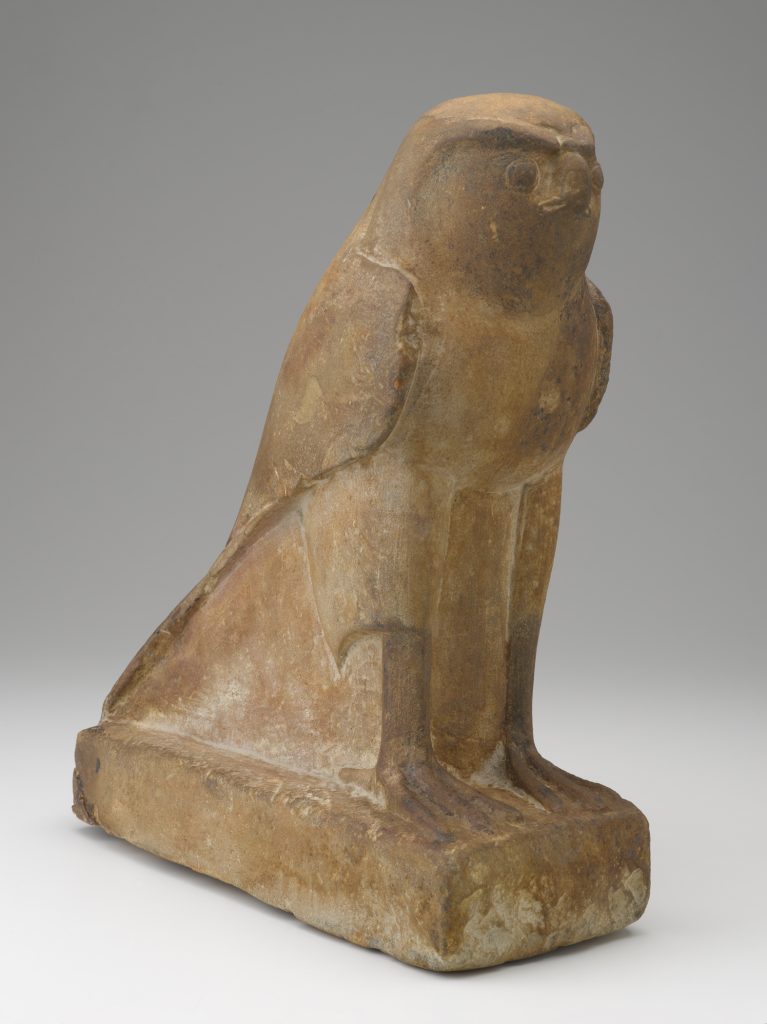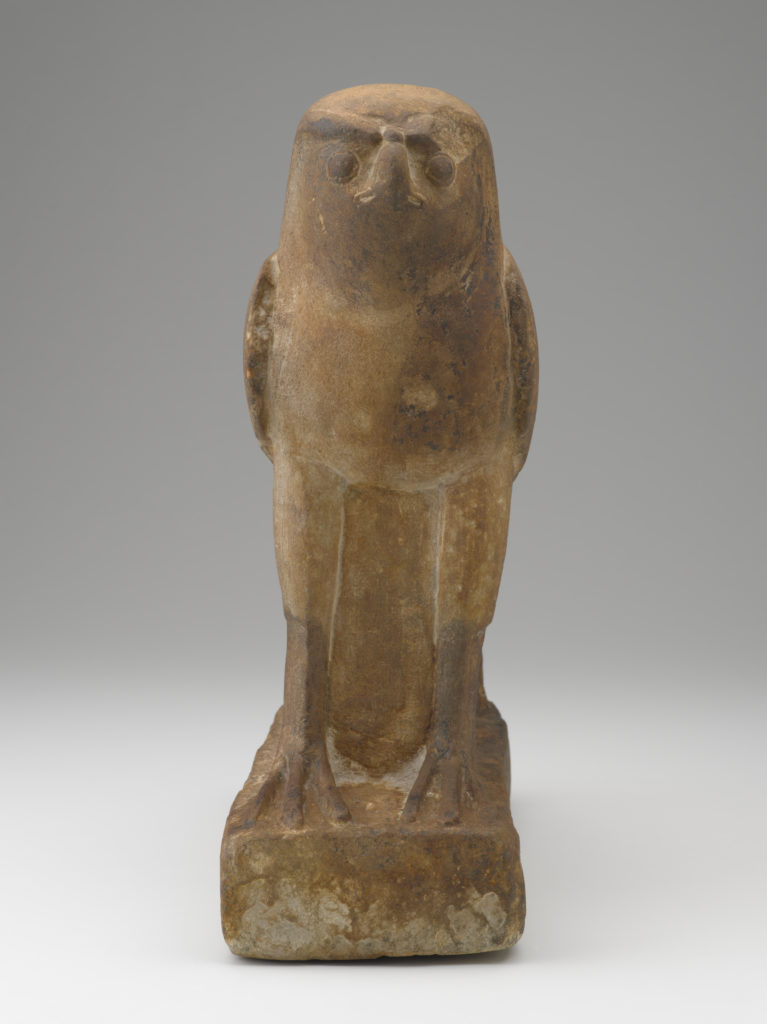Horus Falcon (work of art)
Artwork Info
Key Ideas about this Work of Art
- This sculpture is carved out of limestone, one of the main materials ancient Egyptians used to build pyramids, tombs, and temples. Limestone could be found in the hills and cliffs bordering the Nile River between Cairo and Esna.
- Horus is the name of a sky god in ancient Egyptian mythology. He is the son of Osiris and Isis. He is best known as the protector of the ruler of Egypt.
- Pharaohs, or rulers, were considered to be the “living Horus.”
- This sculpture represents Horus as a lanner falcon, a bird of prey that is native to Africa. In other works of art, Horus is represented as a man with the head of a falcon or as a small boy seated on his mother’s lap.
Learn More
Horus was one of the earliest and most important gods of ancient Egypt. As a falcon he was a sky god and a sun god; as a divine child, he was the son of Isis and Osiris. Horus was also the god of kingship and a protector of the king.
tags: animals, ancient Egypt, mythology, meaning, observation, power, ritual
Additional Resources
Resources for Teachers
- Learn more about Horus.
- Read 10 interesting facts about Horus.
- Explore different types of stone used to create sculptures.
Resources for Students
- Take a look at another statue of Horus.
- Learn more facts about Horus.


